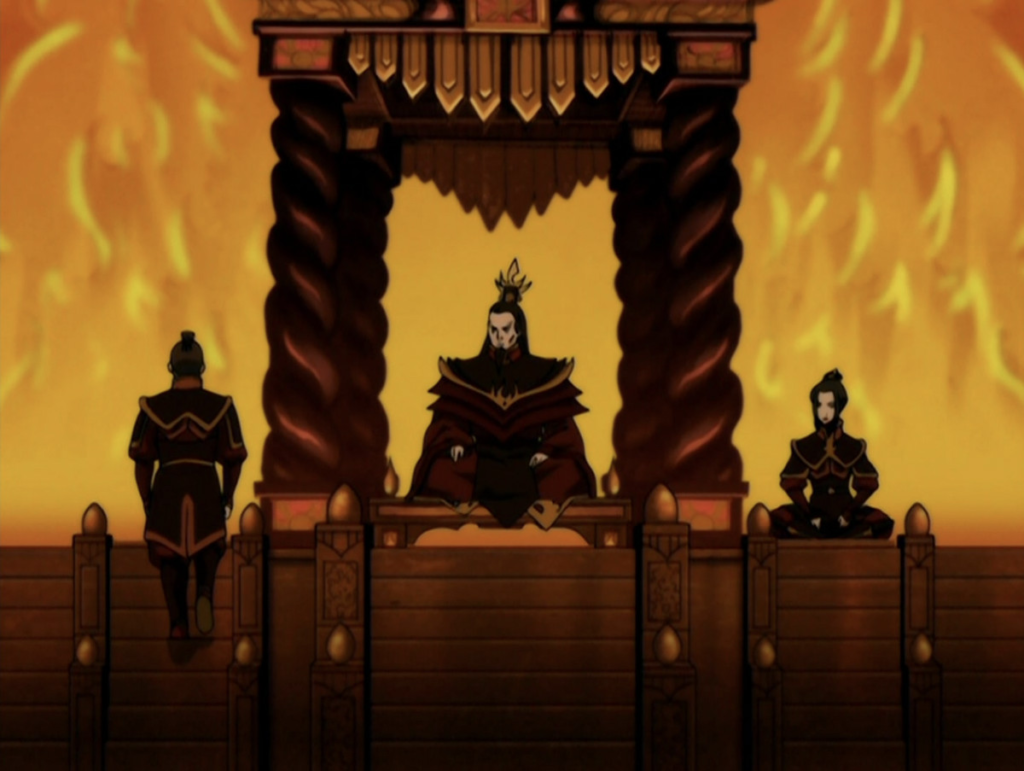M. Night Shyamalan’s The Last Airbender is infamous for the changes it made to the setting of Avatar: The Last Airbender — like saying “Ahhng” instead of Aang, or “Eee-row” instead of Iroh, or like making everybody white.
But there’s one completely arbitrary and unnecessary change that’s actually kind of interesting: making it so that firebenders have to keep an open flame around at all times, because they can’t actually generate fire.
I can recall that fateful day almost 15 years ago that I sat down in a theater and subjected myself to Shyamalan’s The Last Airbender, with its sleep paralysis demon Appa, its ’90s Power Rangers-ass fight scenes, and its main character with a functionally different name. And maybe it was just the delusion of an overwhelmed mind, but I do recall thinking to myself: Wait… firebenders only being able to bend fire that exists in their environment is kind of interesting.
Hear me out
Image: Nickelodeon Animation Studio
Firebending has always been the odd element out; it’s just that the Avatar: The Last Airbender cartoon did a good job of making it seem interchangeable with water, earth, and air. But of the four, fire is the only one that doesn’t occur in nature in a stable form. You can’t stick some fire in an oiled leather pouch and uncork it when the fighting starts, like Katara does with her waterskin. Even torches last only a couple hours. (Lava and magma are under the purview of earthbending, we know this.)
One of these things is not like the other. Fire is the only element in Avatar that’s non-material: Fire isn’t stuff, it’s a chemical reaction. So firebenders wind up being the only people in the world to have the phenomenally powerful ability to make their element appear from nothing.
If firebenders can’t generate fire from their environment, it simultaneously puts them on the same level with the rest of the nations, and gives them a clear disadvantage. It’s the kind of thing that could give the Fire Nation a kind of baked-in inferiority complex of being the odd element out, a cultural quirk that fits in nicely with its descent into xenophobia and imperialism.
Also, constraints build tension
The key to an interesting superpower is a good counter. You can take Batman’s belt away, you can expose Superman to kryptonite, or you can restrain Wolverine’s cut-through-anything claws by pointing them at one of his friends. A baked-in way to restrain or remove a character’s special powers is a baked-in way to raise tension — and it makes them look even cooler when they push through it anyway, like when Toph develops metalbending, or Katara figures out how to bend her own sweat, or a bunch of earthbender prisoners finally get close enough to a stack of coal.
Now, to be clear, Shyamalan’s Airbender doesn’t execute on this idea in a particularly thought-out way. Functionally, it just seems to mean that Fire Nation soldiers are constantly carrying lit torches or lugging heavy braziers around. It seems like a huge disadvantage next to earthbenders and ice-floe-living waterbenders who are flinging chunks of their own streets through the air as spikes, or Aang’s ability to weaponize something as omnipresent as air. And fire having to be present in order for it to be bent raises questions about the nonviolent uses of firebending we see in the Avatar cartoon, like warming the body in cold environments.
So it’s not like Shyamalan was showing us firebenders getting stealthy with hooded lanterns, or how they’re developing steampunk workarounds like automatic flint strikers or strike-anywhere matches — or how their clothing or architecture changes because they need to have an open flame in every freakin’ room at all times.
Shyamalan’s Airbender seems to have made this change just to juice one of its climactic scenes, in which it reveals that sometimes a firebender can generate fire from thin air, but only if they’re, like, a total badass.
Fifteen years on, the only moment of Shyamalan’s Airbender I distinctly remember is the moment after Admiral Zhao stabs the Moon Spirit when Iroh goes fully off leash and flames fountain from his hands. Shyamalan sells the moment in the visuals and in the reaction of the extras: Even seasoned Fire Nation soldiers immediately flee. The only fire in this environment belongs to Iroh.
It’s overblown and goofy and a trifle sedate, but it gets the point across: In a world where you can stymie most firebenders by taking their fire away, the ones who can bend fire anyway are terrifyingly powerful. Frankly, it makes cartoon Azula’s fancy blue firebending-prodigy flames seem tame in comparison.
Was Shyamalan secretly a genius for this? Probably not. Would this change have materially improved the original Avatar: The Last Airbender? Nah, it’s still master class in world-building. But it goes to show that even a broken clock can have a lesson in how to raise the stakes, once or twice a day.

